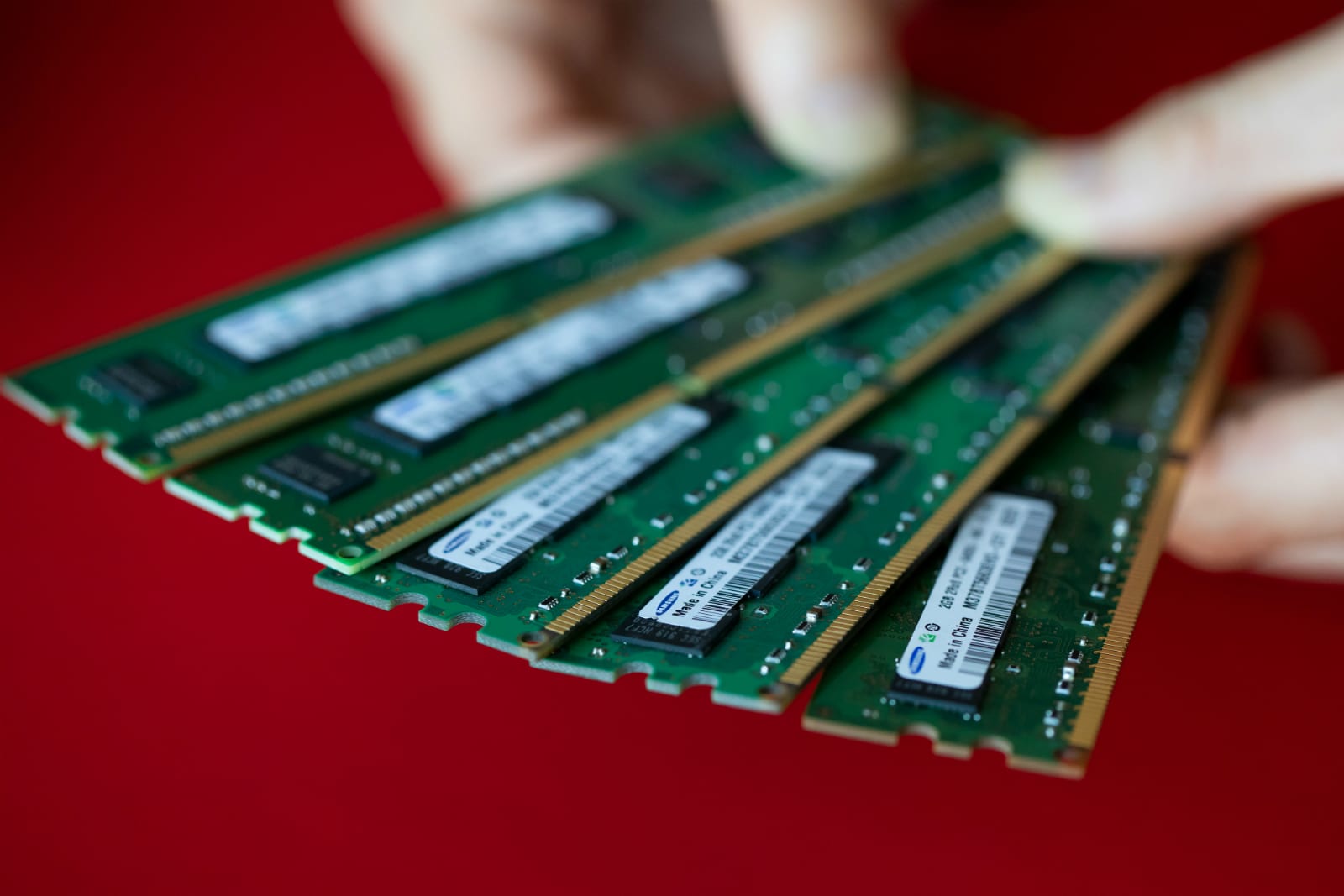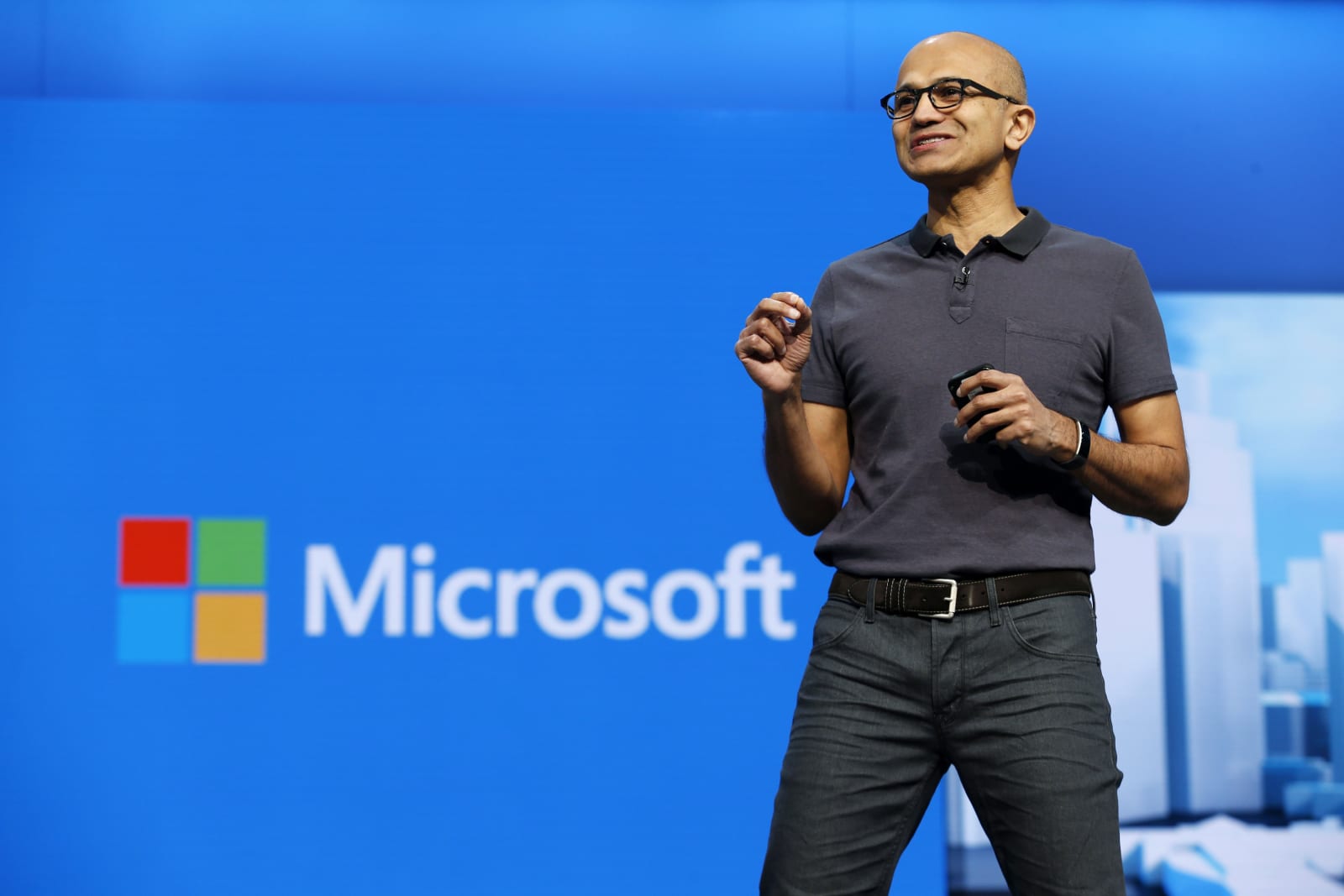Tag Archives: research and development
Samsung invests in logic chip R&D to take on Qualcomm and TSMC
 Samsung's chip division is its most lucrative, but memory chip prices are falling and the company's overall operating profits are slipping. In response, Samsung just announced a $116 billion investment in non-memory chip R&D and production infras...
Samsung's chip division is its most lucrative, but memory chip prices are falling and the company's overall operating profits are slipping. In response, Samsung just announced a $116 billion investment in non-memory chip R&D and production infras...
Microsoft reorganizes to create a dedicated AI division
 Microsoft has reorganized several disparate projects and programs into an entirely new Artificial Intelligence group. It will be the fourth major division after Windows, Office and cloud, reallocating over 5,000 computer scientists and engineers unde...
Microsoft has reorganized several disparate projects and programs into an entirely new Artificial Intelligence group. It will be the fourth major division after Windows, Office and cloud, reallocating over 5,000 computer scientists and engineers unde...
Four Reasons Merck’s R&D Restructuring May Not Save The Drug Giant (Or The Industry)
From the lab: Lumia 920 image stabilization and 808 drop test at Nokia R&D (video)
Yesterday's lab installment gave us an opportunity to pit the Lumia 920 against competing smartphones in a low-light capture scenario, but Nokia's standard battery of tests is used to evaluate and improve far more than stills shooting. Several stops throughout the day brought us to a foam-filled sound chamber tasked with analyzing call quality in a variety of environments, a room with industrial freezers and ovens used to push the limits of operability, and a rig that can shoot with interchangeable sensors and apply image quality algorithms in real-time, without a handset in sight. Unfortunately, due to proprietary technologies and processes, we weren't permitted to photograph these first facilities, though we did manage to snap away at two other stations -- a platform that shifted up and down at adjustable speeds to test the Lumia 920's optical image stabilization, and a machine that drops smartphones against a block of concrete, used to simulate that all-too-frequent occurrence of handsets plunging towards pavement.
We've seen plenty examples of the 920's OIS capabilities this week, so we won't go into much more detail on that front, but specialized (and pricey) equipment enables engineers to introduce consistent processes -- this machine simulated hand shake at different speeds, and even with exaggerated movement, the benefits were clear. A separate building contained the drop test contraption, which releases devices from an adjustable height, letting them land directly on a block of polished concrete. We tested both the 808 PureView and a Samsung Galaxy S III in this manner (with roughly 100 Lumia prototypes currently available, Nokia wasn't quite willing to risk sending one to its death). Both smartphones remained in perfect working order following the drop, so it's likely that they'll be able to handle a similar fall during regular use as well (company reps offered to test our iPhone 5, but we declined handing it over). That wraps up our week at Nokia's facilities in Finland -- there will be plenty more to explore once we have a Lumia sample in hand, but you'll find the OIS test and concrete plunge videos ready right now, posted just after the break.
Continue reading From the lab: Lumia 920 image stabilization and 808 drop test at Nokia R&D (video)
Filed under: Cellphones, Cameras, Mobile
From the lab: Lumia 920 image stabilization and 808 drop test at Nokia R&D (video) originally appeared on Engadget on Thu, 27 Sep 2012 17:27:00 EDT. Please see our terms for use of feeds.
Permalink | | Email this | CommentsSamsung spending $4 billion to renovate Austin chip factory
Premiership footballers will be weeping in envy at the way Samsung's been spending its cash this month. After splashing $822 million on a Korean R&D center, it's now chucking $4 billion to renovate its semiconductor factory in Austin, Texas. The cash will be used to increase production on system-on-chip products used in a wide variety of smartphones and tablets, presumably to cope with future demand. It's not clear if this investment is in addition to the $1 billion it was raising in January to add a new SOC and OLED line to the same facility, but it's certainly a good time to be living in Texas, right now.
Filed under: Cellphones, Tablet PCs
Samsung spending $4 billion to renovate Austin chip factory originally appeared on Engadget on Tue, 21 Aug 2012 06:33:00 EDT. Please see our terms for use of feeds.
Permalink | Reuters | Email this | Comments
Reuters | Email this | Comments Samsung gets green-light for $822 million R&D HQ in Korea
Samsung has received permission from local authorities to erect a 330,000 square meter, 10-storey high research and development center in Umyeon-dong, Seocho-gu, Seoul. The facility, which broke ground last week, is expected to cost around 1 trillion won ($822 million) and will house around 10,000 employees. The company's expecting to be able to move in by May 2015, so remember to buy a plant to take to the housewarming party.
Filed under: Misc. Gadgets
Samsung gets green-light for $822 million R&D HQ in Korea originally appeared on Engadget on Fri, 17 Aug 2012 15:23:00 EDT. Please see our terms for use of feeds.
Permalink The Next Web |
The Next Web |  Korea Herald | Email this | Comments
Korea Herald | Email this | Comments Apple details neighbors on Campus 2 plans, extends rare request for feedback
Cupertino residents may have received an unsolicited package from their most prominent neighbor this week. No, it's not a new iPad, or an early look at the iPhone 5 -- instead, people close to Apple (from a physical perspective) opened the glossy mailing to reveal a detailed look at Apple Campus 2, which will consist of 176 acres currently occupied by "aging buildings" and trees. As we already know, the campus will feature one main circular four-story building with 2.8 million square feet of office and common space, along with an additional 300,000 square feet set aside for dedicated (secure) research buildings. There will be a restaurant, fitness center and other facilities aimed to "reduce automobile trips" as part of the company's plan to protect the environment. Apple CFO Peter Oppenheimer appeals to neighbors in a single-page letter, offering additional information upon receipt of a pre-stamped response card, which also prompts neighbors to add their name to a list of supporters, attend a public meeting or write a letter to show their support for the new Apple complex. You'll find Oppenheimer's letter in full after the break, along with additional photos at the source link.
Continue reading Apple details neighbors on Campus 2 plans, extends rare request for feedback
Apple details neighbors on Campus 2 plans, extends rare request for feedback originally appeared on Engadget on Mon, 21 May 2012 15:20:00 EDT. Please see our terms for use of feeds.
Permalink | MacRumors | Email this | Comments
MacRumors | Email this | Comments Kickstarter talks to us about product ‘pre-orders,’ won’t force refunds when creators flake
 Kickstarter has proven an incredibly effective venue for connecting project creators with monetary support -- inventors pitch directly to consumers, indie filmmakers meet indie producers and food trucks get the financial push necessary to take their restaurants to the road. With the latter two, backers don't necessarily expect goods in return, save for an overvalued t-shirt, bumper sticker or film credit. When it comes to electronics, however, funders are often promised a first-off-the-line gadget -- one that may never arrive at their door.
Kickstarter has proven an incredibly effective venue for connecting project creators with monetary support -- inventors pitch directly to consumers, indie filmmakers meet indie producers and food trucks get the financial push necessary to take their restaurants to the road. With the latter two, backers don't necessarily expect goods in return, save for an overvalued t-shirt, bumper sticker or film credit. When it comes to electronics, however, funders are often promised a first-off-the-line gadget -- one that may never arrive at their door.
One oft-overlooked, yet critical detail should help curb expectations, while also serving to filter out pledges that are motivated by the pre-order promise, from those that offer financial support without a guaranteed return. Like it or not, all transactions fall into that second category. Pre-order offers may go unfulfilled, and some pledges may be reduced to donations, if a project creator ends up unable to deliver an item as intended. And such situations may not prompt a refund, souring the experience for an increasing number of hopeful device owners. Join us past the break for an explanation from the Kickstarter team, and a closer look at some recent examples.
Kickstarter talks to us about product 'pre-orders,' won't force refunds when creators flake originally appeared on Engadget on Mon, 07 May 2012 14:21:00 EDT. Please see our terms for use of feeds.
Permalink | Kickstarter | Email this | Comments
Kickstarter | Email this | Comments Huawei throws R&D dollars at gesture control, cloud storage, being more ‘disruptive’
Undeterred by the fact that even humans struggle to interpret certain gestures, Huawei says it's allocating a chunk of its growing R&D budget to new motion-sensing technology for smartphones and tablets. The company's North American research chief, John Roese, told Computerworld that he wants to allow "three-dimensional interaction" with devices using stereo front-facing cameras and a powerful GPU to make sense of the dual video feed. Separately, the Chinese telecoms company is also putting development cash into a cloud computing project that promises to "change the economics of storage by an order of magnitude." Roese provided scant few details on this particular ambition, but did mention that Huawei has teamed up with CERN to conduct research and has somehow accumulated over 15 petabytes of experimental physics data in the process. Whatever it's up to, Huawei had better get a move on -- others are snapping up gesture recognition and cloud patents faster than you can say fa te ne una bicicletta with your hands.
Huawei throws R&D dollars at gesture control, cloud storage, being more 'disruptive' originally appeared on Engadget on Mon, 30 Apr 2012 05:40:00 EDT. Please see our terms for use of feeds.
Permalink SlashGear |
SlashGear |  Computerworld | Email this | Comments
Computerworld | Email this | Comments 








